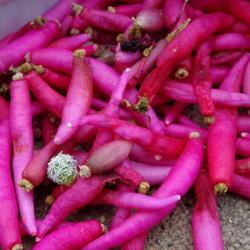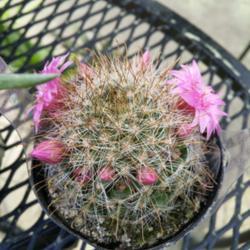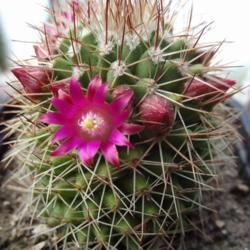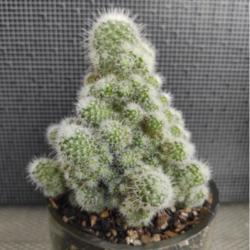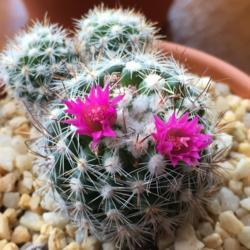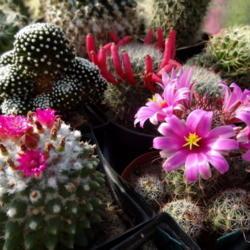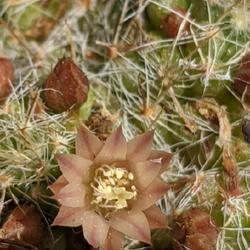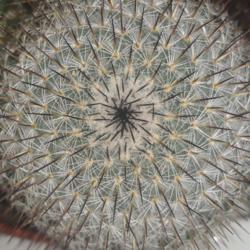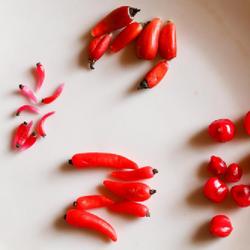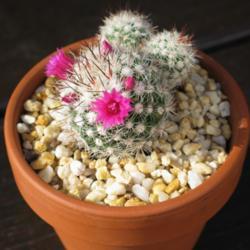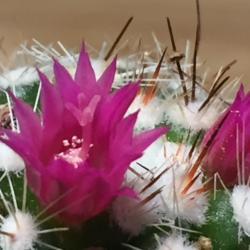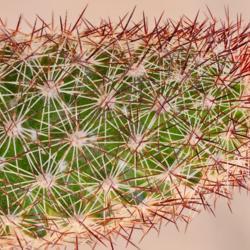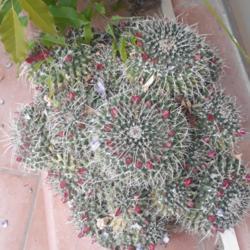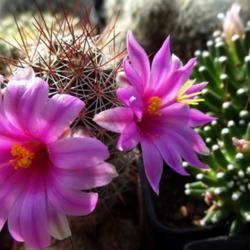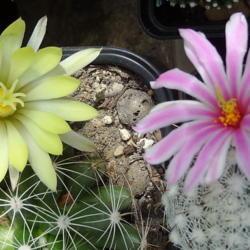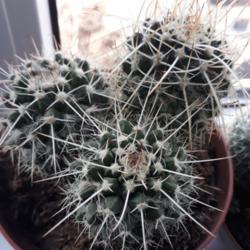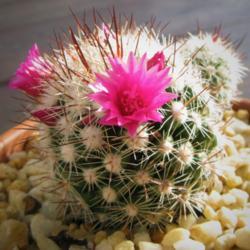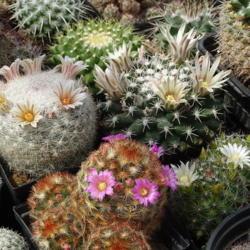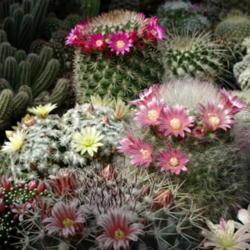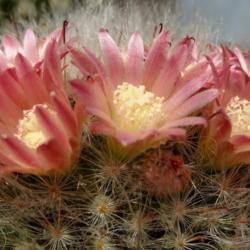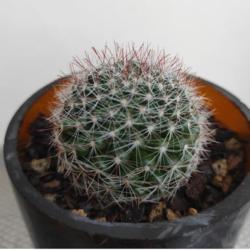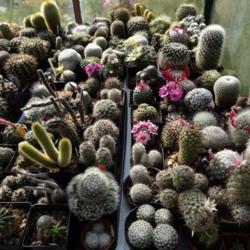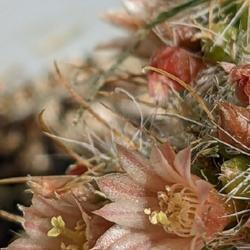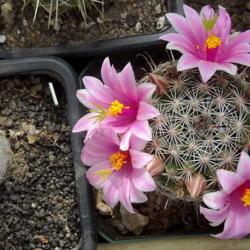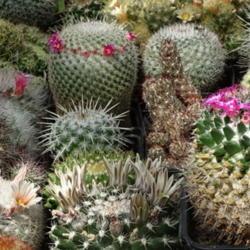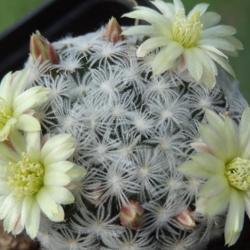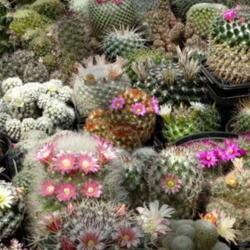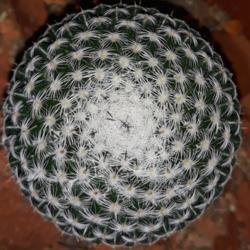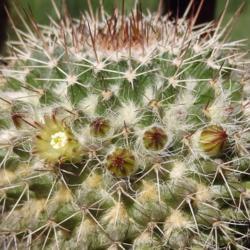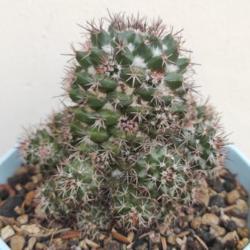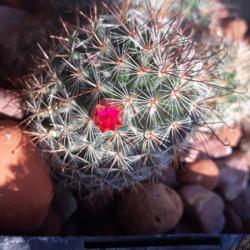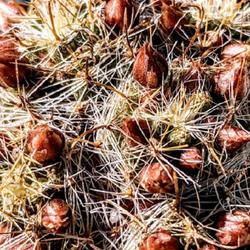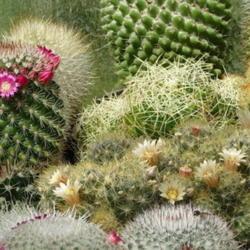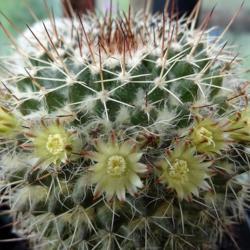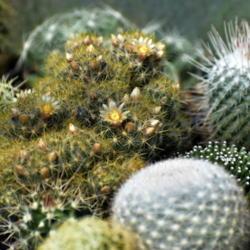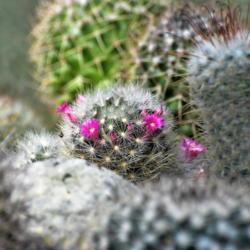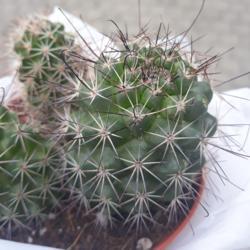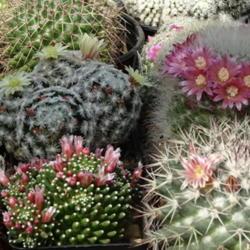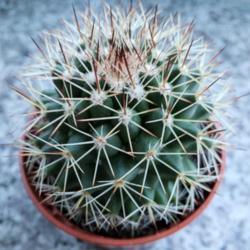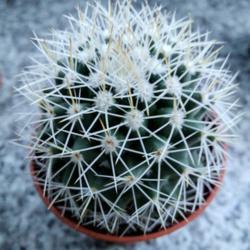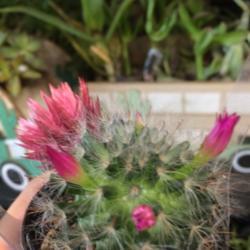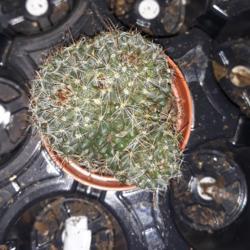One of the largest and most popular genera of cacti, known for flowering in profusion in crowns near the top of the plant. Generally well behaved in containers, provided excellent drainage, strong light, and discipline with the watering can. These are dry growing plants and they do not enjoy wet feet or low light.
From North America and the Caribbean, just into South America. About 90% of the species are endemic to (found only in) Mexico, and a third of the species are endemic to a single state in Mexico. The two main hotspots are central Mexico and southern Baja California.
A defining feature of this genus (which is not unique to it) is the presence of dimorphic areoles. The spines come out at the end of the tubercles, but the flowers, bristles, wool, and branches (if present) all come from the axils in between the tubercles. Another defining feature is that flowers do not appear at the apex (top center) but just below it, typically in a ring below recently produced tubercles. Several Mammillarias make edible fruit, though some are much better than others.
This genus, which recently absorbed the monotypic genus Mammilloydia, is apparently sister to Cochemiea, a group of hooked-spine plants with distinctive red, zygomorphic flowers attracting hummingbirds. Until recently Cochemiea was lumped with Mammillaria. However a recent (2021) revision of these genera based on DNA analysis rearranged them significantly, moving almost all the plants with hooked spines into the resurrected Cochemiea and leaving the straight-spined plants in Mammillaria. These genera are cousins of the mostly North American Coryphantha and (more distantly) Escobaria, which bear their flowers at the apex. Escobaria was apparently absorbed into Pelecyphora, based on more genetic analysis.
Much more info here:
https://garden.org/learn/howto...